Entrepreneurs Seize Opportunity in Seafood Traceability
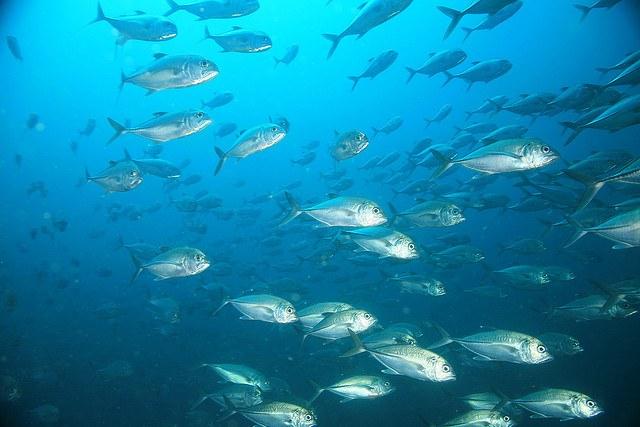

By Monica Jain
The seafood industry has one of the most complicated supply chains in the world, often with five to seven companies involved from catch to plate, each keeping records on paper in far-flung locations. In these murky waters a new wave of entrepreneurs sees opportunities to make the seafood industry more transparent to consumers, businesses and governments striving for sustainability.
The seafood industry defines traceability as the ability to track the source of seafood, the conditions under which it is farmed or caught, and the intermediaries it passes through. Improving traceability is critical to promoting sustainability in both aquaculture and wild-caught fish: The current, largely opaque supply chain hides numerous negative impacts, including overfishing, fraud, human rights abuses in the labor force, pollution and resource depletion. (See TriplePundit’s recent Q&A on seafood traceability for details on systemic issues.)
The shrimp market illustrates many of these issues. Shrimp is one of the most heavily consumed types of seafood, accounting for a $5 billion market in the U.S. and 2 billion euros in the EU. More than half the world’s shrimp supply comes from aquaculture, which has grown rapidly in recent years, largely in Asia. As detailed in our recent report, this rapid growth and lack of oversight has resulted in habitat destruction, disease outbreaks, and in the case of the Thai shrimp feed industry, forced labor.
The fishing industry in Thailand employs 300,000 people, many of them migrants from Myanmar or Cambodia. These migrants often are heavily indebted to their traffickers, who then sell them off as crew on ships catching fish used for shrimp feedstock. NGOs and governments have been bringing international pressure to bear on this issue, and retailers in the U.S. and Europe are looking to traceability strategies to verify suppliers’ labor standards. Ethical suppliers are out there. Traceability enables corporate buyers and consumers to support businesses that are socially and environmentally responsible and to avoid creating market incentives for bad practices.
Entrepreneurs take on supply chain hazards
The rising demand for traceable seafood among Western retail buyers and consumers is inspiring entrepreneurs and investors to develop solutions for the shrimp market and the entire seafood sector. Their innovations pave the road to change by providing ways to collect reliable data and to keep that data attached to products from the farm or ship to the table. As an added benefit, the data collected can build scientific knowledge about fishery stocks and guide sustainable fisheries management.
The business opportunity is significant: the market for food traceability products and technologies is expected to grow to $14.1 billion by 2019, according to Allied Market Research. That growth is fueled by increased government reporting requirements, consumers who want to know where their food comes from, and businesses answering to both regulators and customers. (For details, see the Fish 2.0 market report on traceability.)
Traceability-focused companies are well-represented in this year’s Fish 2.0 competition for sustainable seafood businesses. We see companies focusing on traceability in various aspects of their business strategy, ranging from developing new technologies that capture data at the source to creating consumer products and brands based on transparent sustainability information. Presenters at Fish 2.0’s final event (taking place Nov. 10 to 11 at Stanford University) include:
- Pelagic Data Systems, a California-based company that provides remote data capture for boats at sea. Its system uses a solar-powered plastic box, installed on each vessel, that passively gathers data on the catch and uploads it to databases via cellular networks. Information on boat and catch weight, movement, temperature, time and other factors is aggregated on a dashboard.
- Shellcatch, another California company, also provides remote data capture and vessel monitoring, with the addition of visual identification—video taken of the catch on the boat.
- TRUfish, based in North Carolina, offers DNA testing of sample fish from batches, allowing resellers and consumers to find out what species is actually being sold. According to a 2013 Oceana study, one-third of all seafood sold at groceries and restaurants in the U.S. is misidentified, creating possible health and safety problems. After processing, much fish meat simply looks too much alike to distinguish species by sight, and the TRUfish system could reduce fraud.
- LoveWild Fish Co., based in Colorado, sells traceable sustainable fish (packaged with gourmet sauces) bought from Marine Stewardship Council–certified fisheries, and from aquaculture operations that meet Global Aquaculture Alliance guidelines.
- FairAgora Asia, a CSR consulting firm based in Thailand and also working in Indonesia, Vietnam and the Philippines, is developing an online system (called VerifiK-8) for fisheries and farmed aquaculture that will track compliance with various environmental and social certification systems.
- New Mexico Shrimp Co. is meeting the demand for traceable shrimp by farming with environmentally sustainable practices. Its shrimp are grown without preservatives or antibiotics—in the Southwestern desert. The company expanded from one to three facilities in just two years of operation, and is planning for another eight by 2016.
Companies like these illustrate why we founded the Fish 2.0 competition two years ago: there’s a real need to connect seafood innovators with investors to bring solutions like these to the marketplace. One in eight people worldwide relies directly or indirectly on the seafood industry, but about 70 percent of the world’s fisheries are fully exploited or in danger of overexploitation, according to the U.N. Food and Agriculture Organization. Traceability is an essential factor in enabling both better resource management and fair working conditions.
Creating systems that allow us to develop the world’s aquaculture resources responsibly, manage fisheries sustainably and ensure that the seafood industry supports good jobs and healthy habitats worldwide is going to be good business over the long haul.
Image credit: Flickr/Laszlo Ilyes
Monica Jain is the founder and executive director of Fish 2.0 and Manta Consulting Inc. She has worked for over 20 years in the private sector and philanthropy, and specializes in creating innovative financing strategies and structures for impact investors, foundations, and private sector–nonprofit partnerships. Follow her @fish20org.
California Can Reduce Dairy Methane Emissions
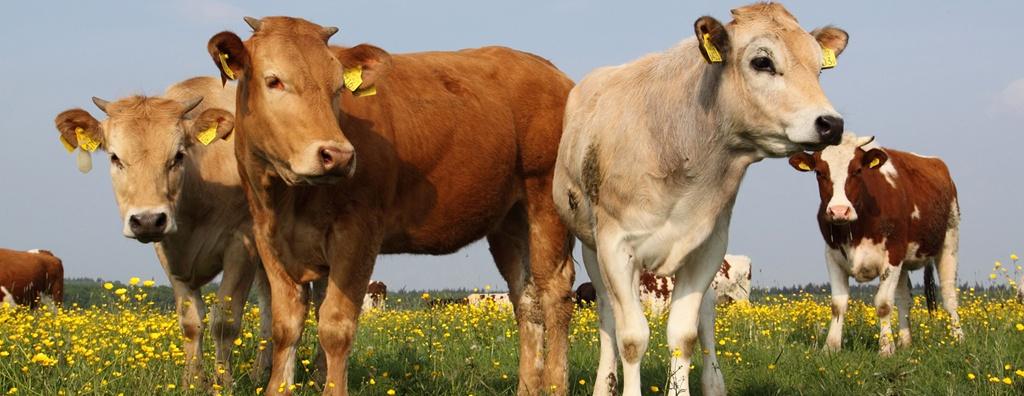

By Matt Baird
On Sept. 30, 2015 California’s Air Resources Board (ARB) released a draft of its Short-Lived Climate Pollutant Reduction Strategy. The final plan is due by the end of the year, as required by Senate Bill 605. The strategy does a great job of outlining the need to address short-lived climate pollutants (SLCPs) in a timely fashion, which include black carbon (soot), methane, and fluorinated gases. The Climate Trust is concerned with how the Strategy proposes to change the regulation of California dairy methane emissions, and therefore the Livestock Protocol used to incentivize dairy methane capture via generation of carbon credits at dairies across the United States.
The strategy explains that the “dairy and livestock industries account for roughly half of the state’s total methane emissions,” and half of these methane emissions result from manure management practices. Most dairies manage manure via a lagoon storage system; creating an anaerobic environment in which the manure produces methane that is released into the atmosphere as it breaks down. Atmospheric methane is a greenhouse gas that traps much more heat per unit than carbon dioxide.
ARB uses the Livestock Protocol under the cap-and-trade compliance market to incentivize dairies to change their practices through the production and sale of carbon offsets. The dairy industry’s manure management baseline, or business-as-usual, creates methane emissions. A carbon credit is generated at a dairy by the capture and productive use of methane, such as electricity generation. The difference between the lagoon baseline emissions and the project emissions, measured in metric tons, is the number of credits generated in a given year. The resulting credit, or California Compliance Offset, may then be sold to organizations required to offset their emissions by California law and increases revenue for the dairy.
Since the Climate Trust contracted with its first biogas project in 2009, the sector has grown to comprise one third of The Trust’s portfolio of offsets under contract since 2010. The Trust is building on that legacy by developing a new carbon fund that will invest capital into early-stage dairy digester projects in return for an ownership stake in the resulting carbon credits; essentially leveraging the Livestock Protocol to capture more methane and reduce financial barriers for dairy owners. However, a new dairy manure management regulation would undermine one of the Trust’s core sectors and make an existing incentive obsolete.
The strategy proposes to “develop a regulation by 2018 that would establish requirements for manure management best practices for new dairies and expansions at existing dairies.” The regulation will therefore alter the baseline for new dairies after the effective date, thus eliminating the delta between carbon project and baseline that produces the carbon credits. Footnote 102 of the strategy continues, “Requiring emission reductions from the sector would mean that offsets under the cap-and-trade program would no longer be issued for new projects.” The strategy proposes to alter the baseline for new dairies in California, but at the same time eliminates the potential for all U.S. dairies to generate offsets for California’s compliance market.
While the low baseline of lagoon-stored manure must change in order to combat methane’s effect on the climate, it is not necessary to make the Livestock Protocol obsolete in the process. The Trust estimates that carbon offset sales represent 20 to 40 percent of revenue generated by a dairy digester, and the percentage will increase in conjunction with carbon credit prices over time. Removing dairy digester projects from California’s carbon market will eliminate or significantly reduce this revenue stream, making dairy digester projects less viable. The removal of this incentive to capture methane for all dairies in the U.S. is a step back for global methane emissions; a step that will work against the goals of the strategy. However, there are alternatives to removing the livestock sector from the market.
One option is to allow for multiple baselines. The proposed regulation only changes the baseline for new dairies in California. Therefore, the 1,000 large dairies currently in operation will continue to manage manure in open lagoons until they expand or cease to exist. Allowing new carbon offset projects to be created on existing dairies seems like a simple solution to simultaneously move toward better manure management, while also maintaining the incentives for existing dairies to improve their practices.
A similar option would be to allow use of the Livestock Protocol in other states, as the regulation only affects California dairies. For example, The Trust manages several dairy digesters in Oregon and Washington, and the baseline manure management rules are not likely to change in the near future. Eliminating all U.S. dairies from California’s cap-and-trade market in order to reduce California’s livestock emissions seems like a small step forward for California and big step back for reining in U.S. methane emissions. Allowing for existing dairies and out of state dairies to have independent baselines would be a good way to move the regulations forward (stick), but maintain current incentives (carrot).
Another alternative involves the current discussion on how to compare various greenhouse gases, especially as it becomes clear the effects of climate change are not something to be left for future generations. There is no single answer on best methods for comparison. The strategy addresses this, and uses a 20 year time horizon for methane with a global warming potential (GWP) of 72 (compared to the 20-year GWP of 1 for carbon dioxide). However, the current livestock protocol uses a 100-year time horizon with a GWP of 25 for methane.
As the strategy’s use of the 20 year time horizon better captures the importance of immediately mitigating methane, and the 100 year timeframe has no scientific basis, it is recommended that the Strategy consider collaborating with stakeholders to update the GWP value used in the Livestock Protocol. If the number of offsets generated by biogas projects doubled, or tripled, this would greatly increase the incentive for new biogas digesters to be built and utilized across the U.S. The change would also synergize with other manure management goals in the Strategy, such as aligning financial incentives with improved manure management practices, fostering markets to increase cost effectiveness, and ensuring reductions at existing dairies—instead of making the goals more difficult.
The Trust agrees that business-as-usual manure management practices need to change, but there are alternatives to those proposed in the strategy; ideas that build off of existing incentives, rather than making them obsolete. ARB recognizes the need for collaboration from many stakeholders in order to achieve significant reductions in SLCPs, and the Trust will be following the Short Lived Climate Pollutant Reduction Strategy as it progresses towards a final version; providing input where possible. The impact of removing a carbon offset sector from the California cap-and-trade market deserves more than a footnote.
Image credit: Flickr/Dirk-Jan Kraan
Matt Baird is the Program Coordinator for The Climate Trust.
'Critical disconnect' between IFAs and responsible investment revealed


A survey of 400 global Independent Financial Advisors (IFAs) has shown that many fail to even discuss responsible investment with their clients.
Research from Alquity, the responsible investment manager, found that over a third (38%) of IFAs said they had never discussed responsible investing with clients whilst almost a third (31%) of IFAs admit they don’t know enough about it. In addition to this a staggering two thirds (66%) of those polled said they lack access to information on it.
However, when asked about the future, 82% think the market for responsible investment products will increase over the next 5 years. The size and growth of sustainable investing in Europe represents 64% of the €19.3t global market for sustainable investments* in 2014, with the UK representing the largest market with a volume of €1.97t.
Many IFAs confirmed that the decision to invest responsibly is driven either entirely or mostly, by their clients and in only 5% of cases is it based on the recommendation of the IFA. Alongside the lack of available information around responsible investing, 32% of IFAs stated that they believe there are insufficient funds to choose from.
Paul Robinson, founder of Alquity commented: “IFAs still don’t understand responsible investment and there is a critical disconnect between the demands of retail investors who are looking at ethical investments and the traditional IFAs. IFAs need to wake up to the benefits of using ESG to drive investment performance and mitigate risks, before they miss opportunities for their clients and become dinosaurs in a world that is embracing responsible investing."
Picture credit:© Predrag Novakovic | Dreamstime.com
Halloween is Here! Is there a Monster in your Basement?


By Jill Abelson
According to U.S. EPA, 19.5 million “monster” fridges -- 15 years or older -- are still in use throughout the U.S., manufactured before 2001 Federal efficiency standards took effect. Most, about 12.4 million, of these monsters are primary fridges in the kitchen, while the rest are secondary, lurking in dark basements or garages. On average, these older units use twice as much energy as a new Energy Star-qualified fridge, collectively eating up more than $4 billion a year in energy costs.
What is more, refrigerator-freezers manufactured prior to 1995 contain chlorofluorocarbons (CFCs) as coolants and in the foam insulation. CFCs were phased out in the U.S. in 1996 because they destroy the Earth’s protective ozone layer. CFCs are also extremely powerful greenhouse gases, between 5,000 and 11,000 more potent than CO2 pound for pound.
Retirement and responsible recycling of these clunkers has been an ongoing focus of the U.S. EPA Energy Star Program, EPA’s Responsible Appliance Disposal (RAD) Program, the U.S. Department of Energy, local and regional utilities, and leading retailers. Many local utilities have sponsored contests to find the oldest fridges in their territory, luring some of the oldest but still operating units out from their hideaways.
In previous posts, 3P looked at the global impact of refrigerants’ link to climate change and the increased importance of responsible recycling.
With an estimated 11+ million refrigerators/freezers, 6 million window A/Cs and about a million dehumidifiers disposed of annually in the U.S., according to U.S. EPA’s RAD Program, responsible recycling remains a priority. The vast majority of old fridges end up in landfills or metal scrapyards, where their coolant refrigerants, insulating foam and other hazardous materials may not be dealt with properly. Old, inefficient fridges that can be rehabbed often end up on the secondary market, where they are resold and put back on the electricity grid.
The good news is that there are a number of programs around the country that insure that retired appliances, especially these older fridges, are handled in accordance with U.S. EPA’s RAD Program, thus saving energy; recycling and re-purposing metal, plastic and other raw materials for a second lease on life; preventing release of hazardous materials; and avoiding harmful emissions from refrigerant coils and insulating foam. The environmental benefits are lost if fridges aren’t recycled properly.
What to do with your scary monster? Chances are, your local utility sponsors a program that can pick up your old fridge and offer a rebate, too. U.S. EPA offers these resources to learn more.
Just make sure you retrieve any candy (or beer) from Halloweens of yore.
Jill Abelson is SVP Marketing, JACO Environmental
Images courtesy JACO Environmental
3p Weekend: 12 Celebrities Who Use Their Fame for Good


With a busy week behind you and the weekend within reach, there’s no shame in taking things a bit easy on Friday afternoon. With this in mind, every Friday TriplePundit will give you a fun, easy read on a topic you care about. So, take a break from those endless email threads and spend five minutes catching up on the latest trends in sustainability and business.
It's easy to be disenchanted with pop culture: After all, apparently more Americans can name all of the Kardashian sisters than correctly identify the vice president.
But in between the vapid pages of those trashy magazines are a few celebrities who are using their fame for good. No, we're not talking about mismanaged foundations or 'guest appearances' at holiday toy drives. These folks take giving seriously—and they're making a huge difference for other people around the world.
Leonardo DiCaprio

Leo's name has become as synonymous with celeb eco-activism as it is with the Titanic. The four-time Academy Award nominee is behind several films aimed at educating the public about environmental issues, the most famous being "The 11th Hour."
In 1998, at the tender age of 25, the actor founded the Leonardo DiCaprio Foundation with the aim of protecting biodiversity and combatting climate change through grantmaking, public campaigns and media projects. The foundation has rapidly scaled up its grantmaking operation in recent years, allocating over $10 million to ecosystems projects.
Leo has also lent his voice to the fight against illegal fishing, created viral memes to educate people about climate change and even owns his own electric vehicle racing team.
Emma Watson
Emma Watson's gender equality activism took center stage last year after her rousing speech before the United Nations announcing U.N. Women's new program, HeForShe.
Watson continues to represent HeForShe, a unique initiative that seeks to rally everyone -- including men and boys -- behind gender equality. The young actress who stole our hearts as Hermione in the film adaptation of the "Harry Potter" series is also a goodwill ambassador for U.N. Women and routinely uses public appearances and social media to speak up on behalf of gender equality.
Jessica Alba

Celebs launching their own companies is nothing new. But brands that outlast the first product offering? Those are a bit tougher to find. Add in a social purpose, and you can see why actress-turned-mogul Jessica Alba and her growing enterprise, the Honest Co., made our list.
While pregnant with her first child, Alba began looking into the chemicals and additives found in many baby and home care products. After reading "Healthy Child Healthy World," she reportedly hounded author Christopher Gavigan for over a year before he agreed to co-found the Honest Co. with her. Teaming up with a seasoned pro in Gavigan, also the former CEO of nonprofit Healthy Child Healthy World, lent an air of credibility to the celeb-backed company, as did the products themselves—which received high marks from the Environmental Working Group.
It hasn't always been smooth sailing for the company—as a recent class-action suit over its sunscreen proves—but, to her credit, Alba has stayed consistent when it comes to her mission for the company. And her Twitter response to the aforementioned lawsuit was more transparent—and, let's just say it, honest—than you'd get from most company execs. So, you keep doing your thing, Jessica!
Elton John

Sir Elton John, who has lost many close friends to HIV/AIDS, is at the forefront of the fight against the disease. He established the Elton John AIDS Foundation (EJAF) in 1992 to try to stem the destruction it causes around the world.
“I have lost many dear friends to this terrible disease,” he said on the EJAF website. “In the mid-1980s, I began channeling my grief into efforts to help raise money for the pioneering charitable organizations that formed during those dark, grim years to fund AIDS research and provide vital services to people with HIV/AIDS.”
Since its founding, the foundation has raised over $125 million to support HIV/AIDS prevention, education and service programs in 55 countries around the globe. Sir Elton also routinely gives huge chunks of his personal wealth to charity: In 2004 he donated over $43 million to nonprofits, making him the most generous person in music for that year, a title he retains year after year.
Angelina Jolie
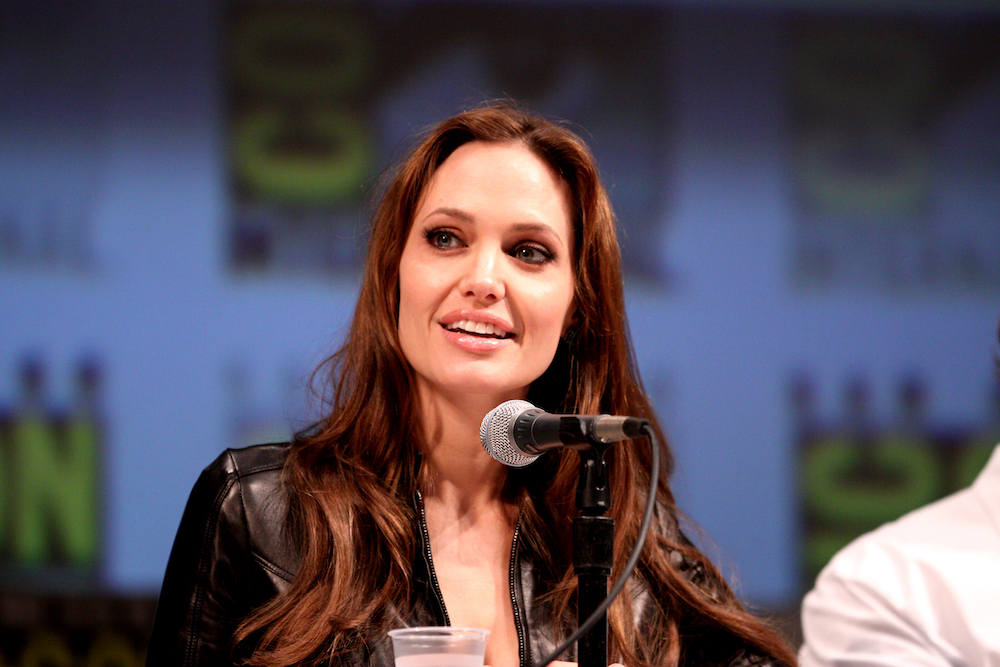
After what seems like decades worth of photos of Angelina Jolie in this developing country or that, many respond to the actress' charity work with little more than an eye-roll. But it's tough for even the hater-est of haters to deny that her 15+ years of philanthropy and activism are impressive.
The actress first became aware of global humanitarian crises while filming "Tomb Raider" in Cambodia. Since linking up with the Office of the United Nations High Commissioner for Refugees (UNHCR) in 2001, Jolie has been on field missions around the world and met with refugees and internally-displaced persons in more than 20 countries, including Sierra Leone, Tanzania, Cambodia, Syria and Iraq.
The Jolie-Pitt Foundation, the nonprofit she founded with husband Brad Pitt, recently donated $1 million to Doctors Without Borders and provides humanitarian aid in more than 60 countries around the world. Jolie still serves as a UNHCR Goodwill Ambassador.
Patrick Stewart
Sir Patrick Stewart is perhaps best known for his role as Captain Jean-Luc Picard on the late-'80s Star Trek reboot, "Star Trek: The Next Generation." But he's enjoyed something of a pop culture revival himself recently—inspiring many a Buzzfeed post, not to mention Tumblr blogs like "F**k Yeah, Patrick Stewart!"
There's no doubt that the 75-year-old's general awesomeness on Twitter is at least partially to thank for his rekindled fame. But his ongoing and outspoken stance for women's rights is also a big part of it. His position on women's rights and domestic violence first entered the mainstream blogosphere after Comicpalooza 2013 (see video above). At the event, Stewart gave an impassioned response to an audience question from a domestic violence victim—winning hearts and minds of millennials the world over, most of whom couldn't care less about Picard fighting the Borg.
Stewart continues to speak out for women's rights, calling on other men to join the fight to stamp out violence against women.
Laverne Cox
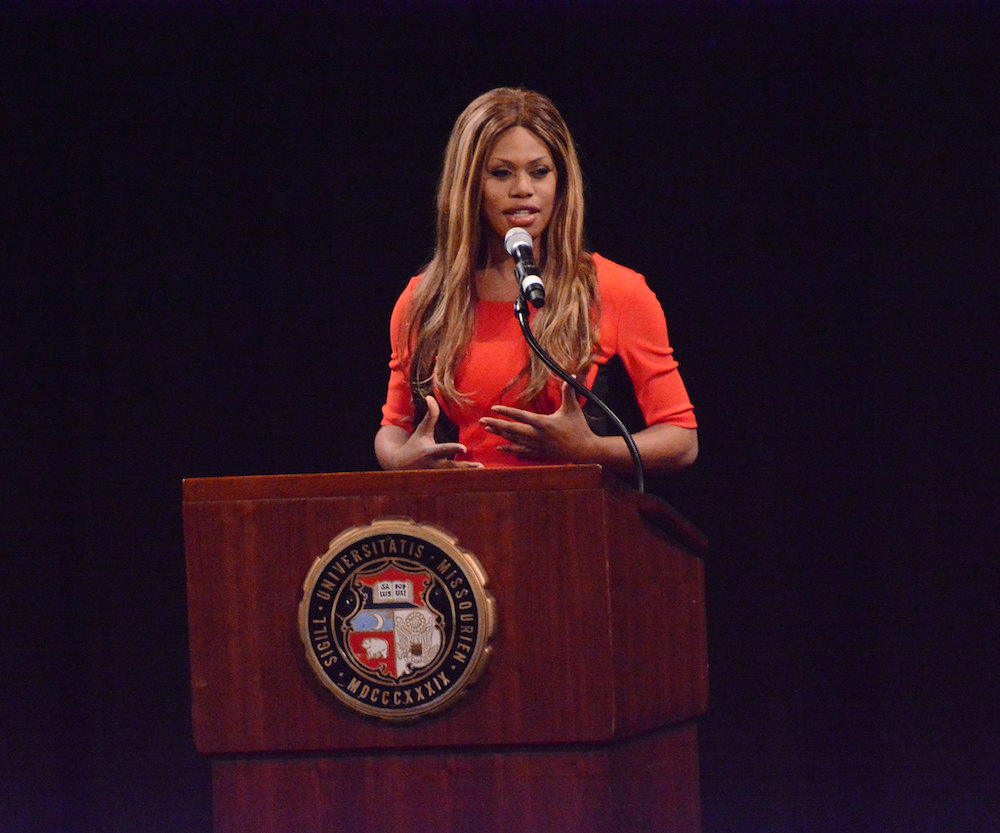
Actress Laverne Cox rose to superstardom in her role as Sophia Burset on the hit Netflix series, "Orange is the New Black." She's also transgender, and she's been busting down doors for the trans community ever since she hit it big.
Let's just rattle off her firsts for a minute: Shortly after becoming the first openly trans person to be nominated for an Emmy, Cox appeared on the cover of Time magazine—another a first for the transgender community. She recently became the first trans woman of color to produce and star in her own television show, VH1’s "TRANSForm Me." I could go on.
Being a famous person who's also trans breaks molds in itself, but Cox isn't content to rest on her laurels and has embraced her position as the public face of the transgender community. She's produced several documentaries about living life as a trans person and the challenges people in the community often face. She also speaks regularly about LGBT issues, and is quick to move the spotlight from herself to the community in her interviews.
Mariska Hargitay

Most of us know Mariska Hargitay for her role as Detective Olivia Benson on the long-running television hit, "Law & Order: Special Victims Unit." But what went on behind the scenes may come as a surprise.
The script's contents and her preparation for the role opened Hargitay's eyes to the systemic problems of sexual assault, domestic violence and child abuse. But what really struck the actress was the fan mail she received.
As recounted by her nonprofit, the Joyful Heart Foundation: "The letters didn't say, 'I love your show. Can you send me an autographed picture?' They said, 'I was raped when I was fifteen. I'm forty now and I've never told anyone.' Survivors were disclosing their stories to her, many for the first time."
Hargitay launched Joyful Heart in 2004, and the organization has since expanded to include hubs of service in New York, Los Angeles and Honolulu. Since its inception, Joyful Heart has directly served 15,000 people, reaching 2.4 million more through its website and social media platforms. The foundation has also laid out a 10-year strategic plan for how it hopes to achieve its mission to "heal, educate and empower survivors of sexual assault, domestic violence and child abuse."
Alicia Keys

Legendary singer, songwriter and actress Alicia Keys has been involved in the fight against HIV/AIDS for over 12 years. She's a co-founder of Keep a Child Alive, a nonprofit that seeks to realize a world without childhood AIDS by "combating the physical, social and economic impacts of HIV." In the role, she's traveled to countries such as Uganda, Kenya and South Africa, and her name has become synonymous with the nonprofit's annual music fundraisers and galas.
In 2014, Keys also co-founded the We Are Here Movement, which seeks to rally her audience around the world's most pressing global challenges like equality, social justice and climate change.
Lucy Liu
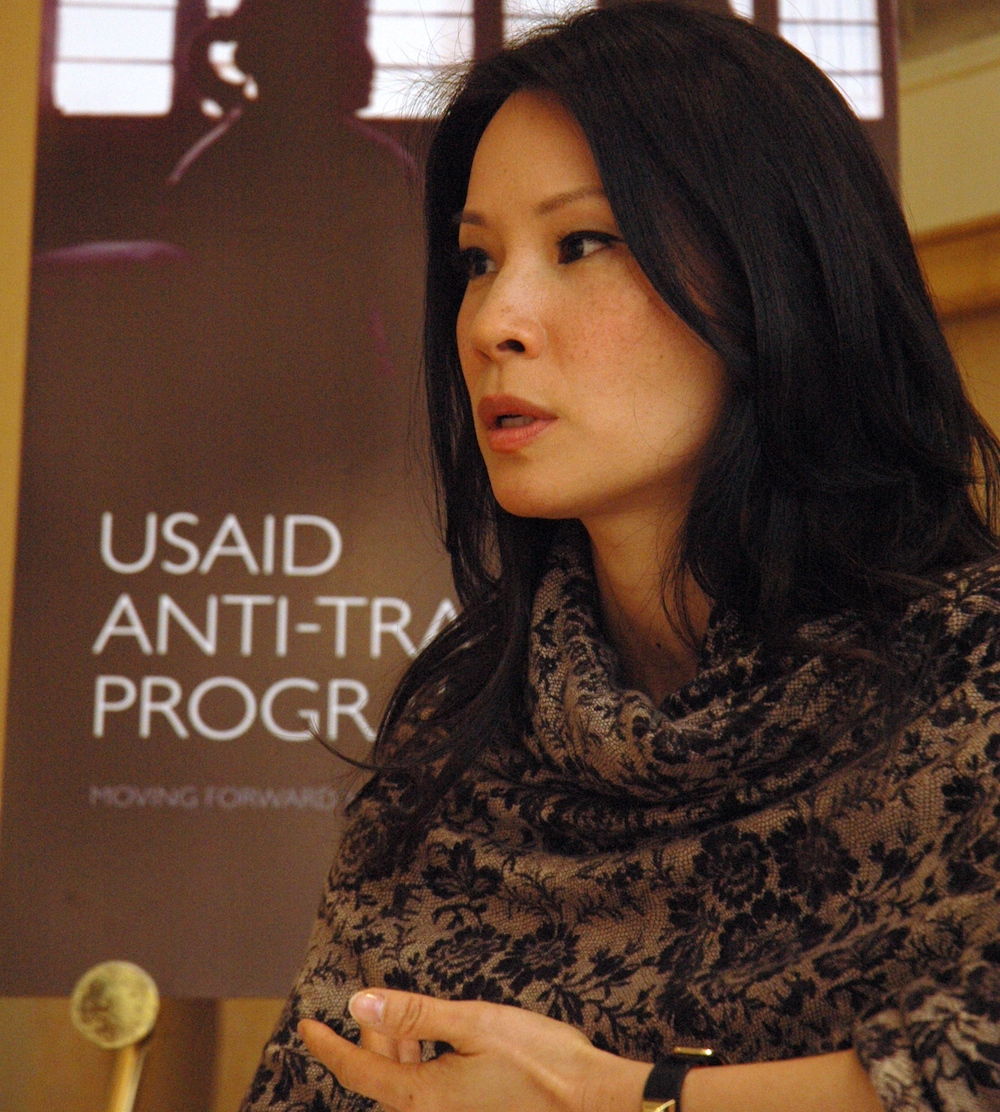
Actress, producer and and director Lucy Liu has been a screen favorite for decades, appearing in box-office hits ranging from "Kill Bill" to "Charlie's Angels." But did you know she's also an ambassador for the United Nations Children's Fund?
Born to immigrants in Queens, New York, Liu was appointed a UNICEF Ambassador in 2004. Since then, she "has involved herself in almost all aspects of UNICEF's various campaigns and initiatives and has been influential in supporting its mission of saving and improving children’s lives worldwide," UNICEF says on its website.
She's traveled to Peru, Russia, Pakistan, Egypt, the Democratic Republic of Congo, Côte d'Ivoire and Lesotho to represent UNICEF in local communities and see the organization's work up close. Adding photography and art to her resume, she also routinely makes, exhibits and sells artwork to benefit UNICEF.
Adrian Grenier
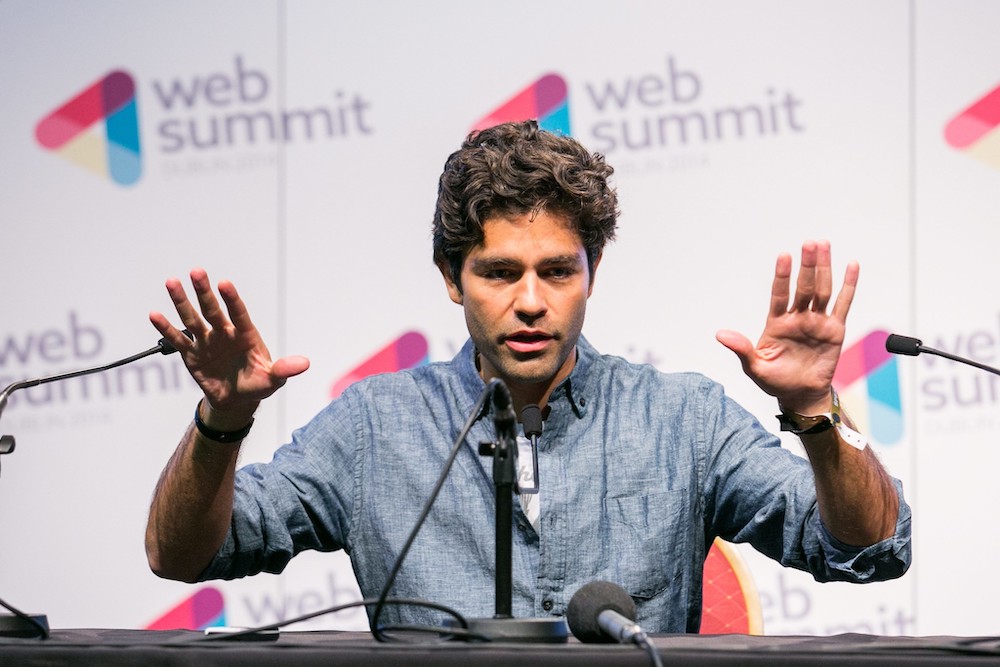
It seems that whenever an eco-minded celeb is needed for a speaking gig, whether it’s SXSW Eco or Ford’s annual trends conference, "Entourage" star Adrian Grenier is there to foot the bill. But beyond helping companies urge average pop culture buffs to give a hoot about the environment, Grenier is making waves in the sustainable business scene in his own right.
His SHFT.com multimedia project, founded with business partner Peter Glatzer, drew the attention of partners like Ford, Virgin America and Stonyfield Organic—who all view it as a high-profile means of raising awareness around environmental causes like electric vehicle adoption and food justice.
Christina Aguilera
Known best for her powerful vocals, Christina Aguilera is also highly active in the fight against world hunger. She's an ambassador for the United Nations World Food Program, and she's been a volunteer global spokesperson for Yum! Brands' World Hunger Relief program since 2009.
In the role, she films annual PSAs to educate music listeners about the staggering problem of world hunger. She's also traveled to countries like Haiti, Ecuador, Rwanda and Guatemala. And she even tweeted a promo of our recent Twitter chat about ending world hunger. Thanks, Xtina!
Image credits: Featured: Flickr/Kingsley Huang 1) Wikimedia (source) 2) Flickr/Gage Skidmore 3) Wikimedia (source) 4) Wikimedia (source) 5) Flickr/KOMUNews 6) Wikimedia (source) 7) Wikimedia (source) 8) Flickr/Bethany 9) Flickr/Web Summit
GE Ecomagination Celebrates 10th Year, Launches Impact Partnership
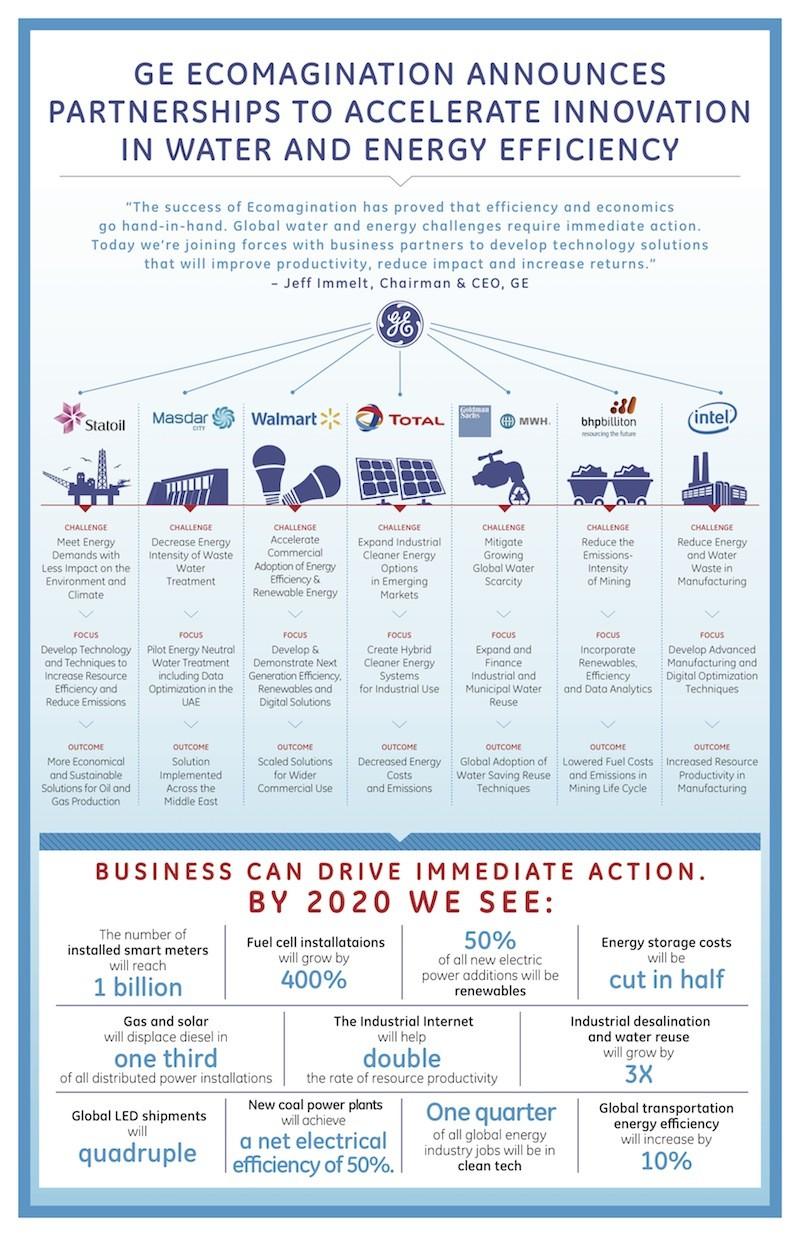

I can remember when GE first came out with the Ecomagination initiative back in 2005. At the time it was considered a bold, and even somewhat risky, move to double up on its investment in clean tech and make it a strategic imperative for the company. CEO Jeffrey Immelt said there were two reasons for taking this on. First, he saw it as a tremendous business opportunity, and second, he said that businesses needed to step up to the plate and do more about global environmental issues.
Today the company is celebrating the 10th anniversary of that launch with the announcement of a new partnership initiative, dubbed Transforming Tomorrow: Partners for Global Impact. These new strategic partners, including Total, Walmart, Intel, Statoil, BHP Billiton, Masdar, MWH Global and more, convened for a dialogue on the need for business to lead the world in finding resource-efficiency solutions.
It would seem that Immelt was correct. Ecomagination has generated some $200 billion in business for GE. The good that's been achieved in the course of all that clean-tech deployment is difficult to measure, but without a doubt it has been substantial. Internally, the company has reduced greenhouse gas (GHG) emissions by 31 percent and freshwater use by 42 percent, exceeding targets and saving $350 million in the process.
TriplePundit spoke with Deb Frodl, GE Ecomagination’s global executive director, about the announcement. Frodl has held this role since 2012. Prior to that she was GE’s chief strategy officer and global alternative fuels leader.
“We are super excited to be partnered up with eight industry leaders who are like-minded and focused on innovation, sustainability and problem-solving," Frodl said. "These partners will help us scale our solutions globally and increase our impact.”
Included in the partnership are the following companies:
- Statoil: oil and gas solutions with reduced environmental impact
- Masdar: decreased energy intensity in wastewater treatment operations
- Walmart: accelerate commercial adoption of efficiency products and solutions
- Total: industrial clean energy in emerging markets
- MWH Global: increase rate of water reuse and reduce water scarcity
- Bhpbilliton: reduce the energy intensity of mining
- Intel: digital technology to reduce water and energy waste in manufacturing
As the result of these partnerships, the company expects to see the following results by 2020:
- Half of all new electric power additions will be renewable
- The industrial Internet will double resource productivity
- Gas and solar will displace a third of remote diesel generators
- Energy storage costs will be cut in half
- 25 percent of all energy-industry jobs will be in clean tech
- One billion smart meters will be installed
- Fuel cell installations will grow by 400 percent
- Industrial, desalination and water reuse will grow by a third
- New coal power plants will achieve 50 percent efficiency (it’s less than 33 percent today)
- Global transportation efficiency will improve by 10 percent
How will the partnership function? According to Frodl, it will vary. In some cases there will be co-development; in others the partners will deploy GE’s technology and help it to achieve scale, while in some cases, it will be a question of providing thought leadership. For the most part, GE will work with one company at a time, rather than working with the partners as a group. But there may well be some opportunities for cross-collaboration, or what Frodl calls “a network effect.”
One example is the partnership with Statoil, which launched earlier this year, aimed at reducing energy and water usage as well as emissions in oil and gas operations. In natural gas fracking operations in North Dakota, for example, GE is collaborating with Ferus Natural Gas Fuels to divert gas that would have otherwise been flared and using it to power equipment. It's also working with Statoil to explore the possibility of economically substituting CO2 for water in fracking operations.
These examples show that GE is clearly following an all-of-the-above strategy when it comes to energy development in the near term. GE has, of course, been involved in all manner of energy generation for many years. And now as the world transitions into a clean-energy paradigm, the company is not only helping to proliferate numerous clean options, but it's also working to help some of the older systems operate in a more efficient manner and with a reduced level of environmental impact.
Another example of the partnership in action is the work GE is doing with MWH Global on the implementation of technology for wastewater reuse, as well as an energy-neutral wastewater treatment project.
The energy-neutral technology is developed in collaboration with a company that GE acquired called Monsal and is piloted by Masdar, Abu Dhabi's renewable energy company. It uses advanced anaerobic digestion technology to produce methane and other useful byproducts, which can make the wastewater treatment plant energy neutral -- or even energy positive. This is another great example of companies stepping up to the plate and working together for a positive impact.
Hopefully the next 10 years will bring all that's been promised and more, because we will surely need it.
For more information on the partnership, check out the infographic below.
Images courtesy of GE Ecomagination
Kiva and Intuit Team Up to Provide Interest-Free Small Business Loans
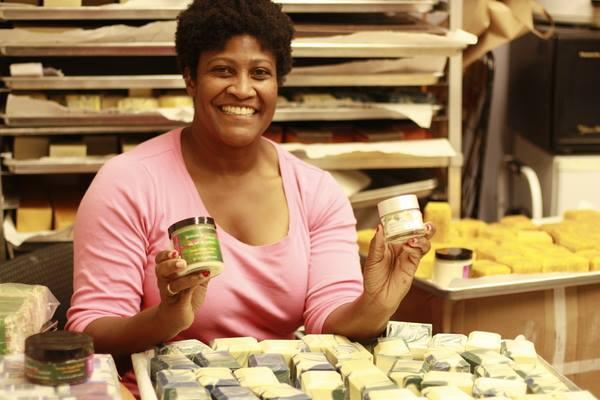

Yesterday, micro-lending nonprofit Kiva announced a partnership with Intuit, the software company behind TurboTax, Quickbooks and Quicken, to help small businesses access capital at the click of a button.
Through a $50,000 donation from Intuit’s Freedom Foundation, the company estimates that nearly 500 small businesses will be funded on the Kiva Zip peer-to-peer lending platform every month.
The initiative is another step forward in eliminating barriers to financing and improving economic outcomes for individuals pursuing entrepreneurship and self-sufficiency.
Applicants who don’t qualify for Intuit’s traditional loan programs will be encouraged to create a profile on the site to raise funds for their business. Loans start at $5,000 and can go up to as much as $10,000.
“We are excited about our partnership with Kiva Zip and to offer small businesses the critical capital they need to start and grow their businesses,” said Jeffrey Kaufman, business leader of QuickBooks Financing at Intuit. “This platform serves a segment of small businesses who previously had no, or very limited opportunities to get the funding they needed. Additionally, the Intuit Financial Freedom Foundation donation is one way Intuit is supporting small businesses across the nation to give them a chance to thrive.”
A veteran in the micro-lending business, Kiva brought its Zip platform online across the U.S in 2014, partnering with city governments and corporate partners to crowdsource almost $10 million in interest-free loans.
Individuals can make small loans directly to entrepreneurs online with as little as $5. There’s no credit check or intimidating interview required. Instead, Kiva Zip relies on “character or credit” and requires that borrowers start by inviting family and friends to launch fundraising efforts. Upon reaching a designated threshold, the business is then featured among the online community, where it can garner additional funding support. Business owners are also able to set up manageable payment terms. Once the loans are repaid, they have the option to apply for a larger loan.
Though significant, the money itself is just one part of the equation. Community-building and engagement plays a large role in connecting individuals to opportunities to have a hand in supporting the success of a small business.
Take for instance the profile of Elsie, a restaurateur who was forced to shutter her restaurant in 2014 after a significant rent increase meant she could no longer do business in her Harlem location. Like any good American comeback story, the entrepreneur is raising $10,000 to purchase a food truck she’ll call the Jerk Shack Caribbean Food Truck.
“After retiring from the NYC Department of Education, I decided to follow my heart and dreams by establishing Elsie’s Caribbean Café in November 2011,” Elsie writes. “However in September 2014, the building that housed Elsie’s was sold and there was a significant rent increase by the new owners. I was unfortunately forced to close my doors. I hope that with this Kiva loan, I will be able to continue serving quality food to my community at affordable prices.”
While the data on the impact of microlending varies, a 2013 study conducted by the Aspen Institute revealed that microloan recipients contribute to local economies through job creation, business sustainability and growth, and income generation.
As banks continue to restrict access to capital, sites like Kiva, Kickstarter and GoFundMe will continue to serve as disruptive options to traditional financing for small business owners.
“We are thrilled by our partnership with Intuit and its foundation,” said Jonny Price, senior director of Kiva. “Kiva borrowers have an 89 percent repayment rate, which means that once the loans are repaid, we can recycle the foundation’s funding to match additional loans, further maximizing the impact we make for small businesses.”
Image courtesy of Kiva
Ben & Jerry's Adds Racial Equality to the Ice Cream Mix
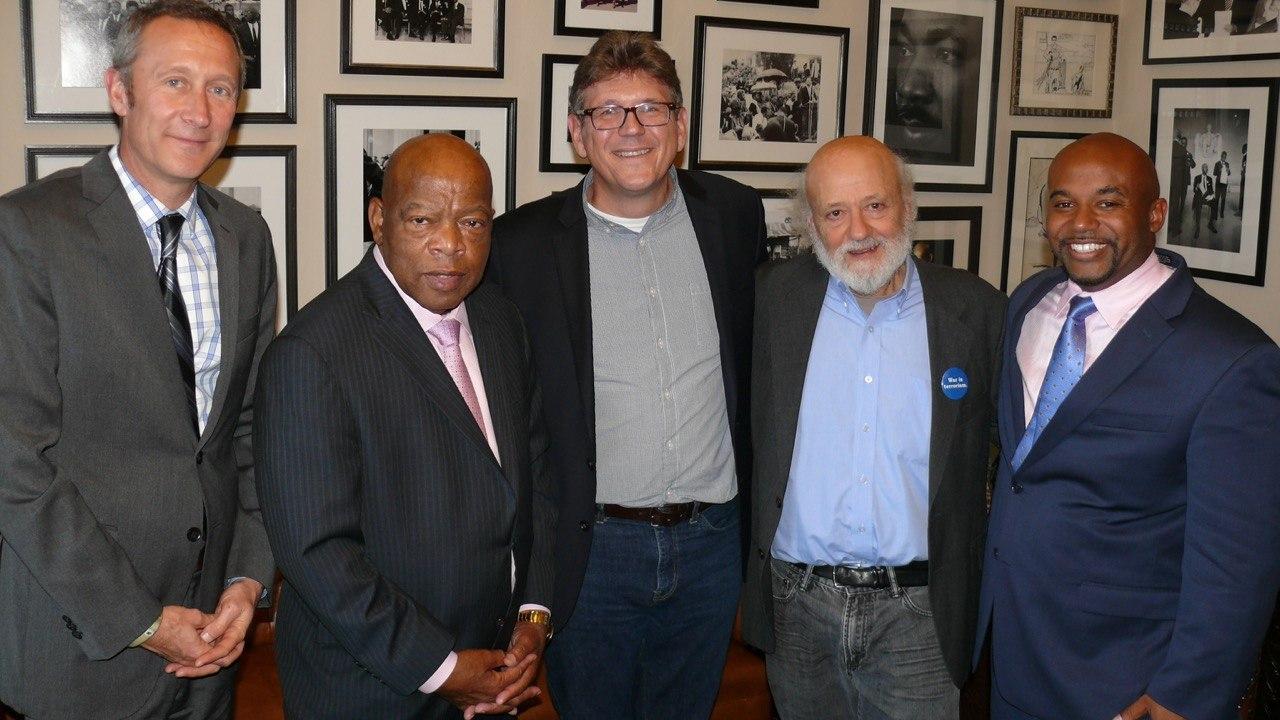

From left to right: Ben & Jerry's activism head Chris Miller, Rep. John Lewis of Georgia, Ben & Jerry's CEO Jostein Solheim, Board Chairman Jeff Furman, and board member Daryn Dodson.
Ben & Jerry's is making a "major, multi-year commitment" to the movements for voting rights and racial equality, said Chris Miller, who manages the company's activism programs.
The initiative, still in planning stages, should burnish the company's reputation for attacking the social problems most large corporations avoid.
Last week, U.S. Rep. John Lewis (D-Ga.) spent 90 minutes advising a group that included Miller; Ben & Jerry's CEO Jostein Solheim; Board Chairman Jeff Furman; and board member, Daryn Dodson. This weekend, Miller, Furman, company co-founder Jerry Greenfield, and several employees will travel to North Carolina for a "learning journey" sponsored by the Ben & Jerry's Foundation.
The Vermonters plan to meet with activists like Nelson and Joyce Johnson, co-founders of the Greensboro, North Carolina, Truth and Reconciliation Commission, and the Rev. William Barber, a leader of the legal challenge to a Voter ID law passed by the state legislature that eliminates same-day registration, bans out-of-precinct voting, restricts early voting, and requires a photo ID before casting a final ballot.
The Ben & Jerry's Foundation is independent of the ice cream company, which has been owned by Unilever since 2000. The foundation occasionally sends company employees, who make all of its grant decisions, on fact-finding trips. In 2014, for example, employees toured the U.S.- Mexico border. Furman and Greenfield are Foundation trustees.
"Ordinarily I wouldn't go on a learning journey," said Miller, "but the company has decided to focus on the confluence of money and politics, voting rights and the larger issues of racial equality, because our democracy only works if it works for everybody.
"When you have massively wealthy individuals funding organized efforts to keep people from voting, it's a bit of a crisis," he continued. "Ben & Jerry's has made major commitments to climate change and the labeling of GMOs. It's at least as urgent to get big money out of politics while getting more people in."
Miller says that the company will probably settle on specific voting rights and racial equality campaigns around the end of the year. He adds that Ben & Jerry's plans to "put a lot of effort" into the 2016 election cycle.
Brad Edmondson is the author of Ice Cream Social, which tells the story of Ben & Jerry's social mission.
Image courtesy of Ben & Jerry's
How to Make Scope-3 Carbon Accounting Less Scary


By Jennifer Anderson
When I talk with people about Scope-3 carbon accounting, I get reactions that generally range from “Are you nuts?” to “There’s no way we can get that data,” or “Maybe in a few years when we are a bit further along.” Yet, Scope 3 (also referred to as value-chain emissions) is important to an organization’s overall emissions picture and is of increasing interest to customers, investors and NGOs. Understanding your Scope-3 emissions can also be a catalyst for generating emissions reductions beyond your own walls.
When you start to dig into that long list of 15 categories of hard-to-get value chain data, it can be overwhelming. Truth be told, conducting a full Scope-3 inventory is a significant task. It’s important to understand what you are doing, why you are doing it and how you will go about it.
I have the good fortune to know Don Bain, a Scope-3 accounting expert. Among other things, Bain works for the GHG Management Institute and is the main man behind the soon to be released Scope 3 Corporate Value Chain course material. Trained as an engineer at Stanford and as a supply chain partner at Ernst & Young, he understands the importance, and challenges, of data and measurement – especially when it comes to managing what is possibly society’s biggest challenge ever: climate change from GHG emissions.
I asked Bain for his suggestions on making Scope 3 a bit less scary for sustainability managers.
Jennifer Anderson: Don, there is a lot of terminology and industry speak that comes up when you get into Scope 3. This leads to confusion and anxiety. How do you like to explain Scope 3 and its relevance to business?
Don Bain: I tend to view it as looking at “everyone else’s emissions” from two important perspectives. Scope 3 looks at:
- How much of others’ emissions your organization is “responsible” for (that is, emissions generated outside your company’s boundary in the course of making and delivering your product or service).
- How much of those emissions you might be able to influence.
For business people, this should be interesting for a couple of reasons. First, we are almost always communicating with our important suppliers. By asking for emissions data, we communicate what is important to us. Often it’s not so much about the numbers, but it’s about conveying that measuring and managing emissions are important to me, as your customer.
Second, if you believe that we will be in a carbon-constrained world and subject to carbon costs, this is the best way to begin to assess your exposure. We’ve gotten very good at optimizing for cost in the supply chain. Someday we will include carbon in that optimization. That will drive a lot of new thinking and ideas.
JA: Scope 3 is gaining ground, but it is still a fairly new concept. How has Scope-3 accounting, and our understanding of measuring it, evolved over the last few years?
DB: When the original GHG Protocol Corporate Accounting Standard came out, it was very prescriptive for Scope 1 and 2, but hardly addressed Scope 3, treating it as a catchall. This was appropriate at the time, but not useful for managing emissions outside the company. In 2011, the GHG Protocol Corporate Value Chain Standard was released. It gives us a way of grouping Scope-3 activities into categories so we can understand where the big opportunities are and where we might make improvements.
JA: What is your advice for organizations that are looking at Scope 3 for the first time?
DB: I think the most important thing is to understand what you want the Scope-3 results for and what you are prepared to do with them. It’s okay to not know the answers going in, but you’ll quickly find that doing Scope 3 is a lot of work and it makes sense to allocate the time and resources to the areas that fit your goals.
Creating a Scope-3 Inventory is a data project. I recommend having someone on your team who understands how to manage large data projects. You will save headaches in future years if you do a good job setting up the data management processes in the beginning – and remember you need several years to make changes and track Scope 3 to see improvements.
Lastly, I recommend using the Pareto Principle. Figure out your big Scope 3 categories – the most intensive value chain activities and the largest Scope-3 contributions from suppliers and other partners – and use that to organize your efforts. One way to do this is to look at the Scope-3 reports of others in your industry, especially big enterprises. You also may be able to get a high level sense from CDP reports.
You may be tempted to start with only a few categories. That’s okay, but if you want to report in accordance with the Corporate Value Chain Standard, you must address all 15 categories.
JA: Does your advice vary by industry or by the size of the organization?
DB: Industry type and size are very important. Industry type informs which Scope-3 categories are more intensive. For example, Category 11 (Use of Sold Products) will be large for an oil refiner, but not so much for an insurance company. Size will determine how many resources you can bring to bear and will somewhat set stakeholder expectations. Because of the time involved, a full inventory implies real costs to suppliers and others in your organization. You should be clear on the goals and value for your company before incurring costs and imposing costs on others.
JA: Would you recommend enlisting the help of an expert or outside vendor with your inventory?
DB: Certainly. If you commit to doing Scope 3 on an ongoing basis, you can save yourself a ton of grief by using fast start kits from consultants. But be sure to participate fully upfront. You should not treat your inventory design as a black box.
Carbon accounting software can be helpful for Scope 1 and 2, but Scope 3 remains a challenge. Remember, for Scope 1 and 2, you are managing activity data originating inside the company. Scope 3 is activity data outside the company for the most part, and it is a very different kind of data problem with very different people involved.
JA: What other resources can organizations take advantage of?
DB: I suggest going to conferences and workshops for an informal exchange of information. People are very willing to share their Scope-3 reports and information person-to-person. Besides you’ll likely never find Scope-3 information in the detail required by the standard in a CSR report, on a company website, or in a CDP report. There’s great irony here: The Scope-3 standard requires a publicly-available inventory report, but it is almost impossible to find.
I also recommend the free online forum available at the Greenhouse Gas Management Institute. A question posted to the forum will go out to hundreds of GHG practitioners around the world and you will get responses.
JA: Agreed! I utilize the forum myself a lot and love it. Are there any other tips (or tricks!) you would impart?
DB: Consistent with my theme of having clear inventory goals and actions, I think it is important to understand when to use activity data from supply chain partners or suppliers, versus lifecycle or proxy data. Some people seem to develop a fixation on one or the other. A combination is almost always the right answer. There are a lot of things for which lifecycle data is perfectly adequate, and so much is available by buying or accessing the right databases. Depending on your industry, there are certain categories where activity-based data makes more sense.
Remember, if your goal is to make Scope-3 reductions, using lifecycle data will not enable you to see year-over-year reductions, because lifecycle data will not change. You will need actual activity data so that you can capture the reductions.
Image credit: Pixabay
Jennifer Anderson is the CEO of Sustrana LLC, a sustainability management solutions company based outside of Philadelphia, PA. Sustrana helps organizations realize business performance improvement through the implementation of sustainability best practices. Sustrana services are offered online and through consulting engagements. Sustrana is a certified B Corp and a certified WBE.
The $3.7 Billion Benefit That Bats Bring to U.S. Agriculture


By Anum Yoon
Mentioning bats usually elicits one of two reactions: “how cute” or “get it away!” No matter where you stand when it comes to the bats themselves, it is impossible to deny the massive benefits that they offer to the agriculture industry, both in the United States and worldwide.
So, why exactly are bats important to U.S. agriculture, and what could they possibly offer that is worth $3.7 billion?
Pollination: Not just for the bees
Bees aren’t the only creatures that can pollinate plants. More than 300 species of fruit plants depend on bats for their pollination, often because their flowers are open at night when the bees are resting in their hives. Some of these plants include tasty favorites like the banana, the mango and the ever important agave plant.
Why is agave so important? Without it, we wouldn’t have tequila: an industry that generates $2.1 billion in supplier revenue in the U.S.
Pests are always a problem
Since the dawn of agriculture, we’ve dealt with pests. Over the years, we’ve developed various methods of exterminating them, each more toxic than the last, when we should have been paying attention to the humble bat.
The common bat species that are native to North America handle $3.7 billion in pest control all by themselves — and that is a low estimate. Some sources estimate that the pest control service that bats provide could be worth up to $53 billion a year.
A single bat can eat between 6,000 and 8,000 insects per night, every single night. For many smaller bats, that is equivalent to eating their weight in bugs. You may have heard that adding bat houses to your property can help control mosquito problems, and, while that is true, bats eat much more than mosquitoes. Favorite bat snacks include:
- Moths
- Cucumber beetles
- Gnats
This is only a small sampling of the insects that most bats consider delicious. Without bats, we would need to invest in expensive and potentially toxic artificial pesticides to make sure crops remained untouched by insects. By fostering healthy bat populations, the U.S agriculture industry can easily reduce its toxic pesticide use by, well, $3.7 billion.
Essential but still threatened
These fantastic, furry pest-control machines are a great asset to farmers across the globe, but instead of thriving, their populations are slowly diminishing. This is attributed to two factors:
- Wind turbines, used to generate wind power
- A fungal disease known as white-nose syndrome
Wind turbines are a great source of green energy, but they are also contributing to the steep decline in the population of bats in North America, some researchers say. Scientists estimate that between 600,000 and 900,000 bats fall victim to the swiftly spinning blades every year, most of these during the bat’s migration season.
Many wind farms are taking steps to help reduce their impact on bat populations by reducing speeds or allowing the turbine blades to idle during migration seasons. Allowing the blades to idle on calm nights, when bats are most active and the wind farms wouldn’t generate much power anyway, is another way to allow these green-energy generators to continue reducing our carbon footprint without reducing the bat population as well.
White-nose syndrome effectively disrupts the hibernation cycle of the bat. Rather than sleeping through winter and relying on the fat reserves that they collected throughout the year, bats wake repeatedly and end up leaving the warm safety of their hibernation site to look for food and water. Ultimately, most of these bats succumb to the elements, and this disease has killed millions of bats since it was first discovered in 2006 in the United States.
Bats are among our most valuable natural pest control resource, simply because they enable us as a country to begin reducing our reliance on chemical pesticides that can be harmful to both us and the environment. By protecting bats and creating a safer environment for them, we are ensuring our own agricultural future as well.
Image credit: Morgue File
Anum Yoon is a writer who is passionate about personal finance and sustainability. She often looks for ways she can incorporate money management with environmental awareness. You can read her updates on Current on Currency.